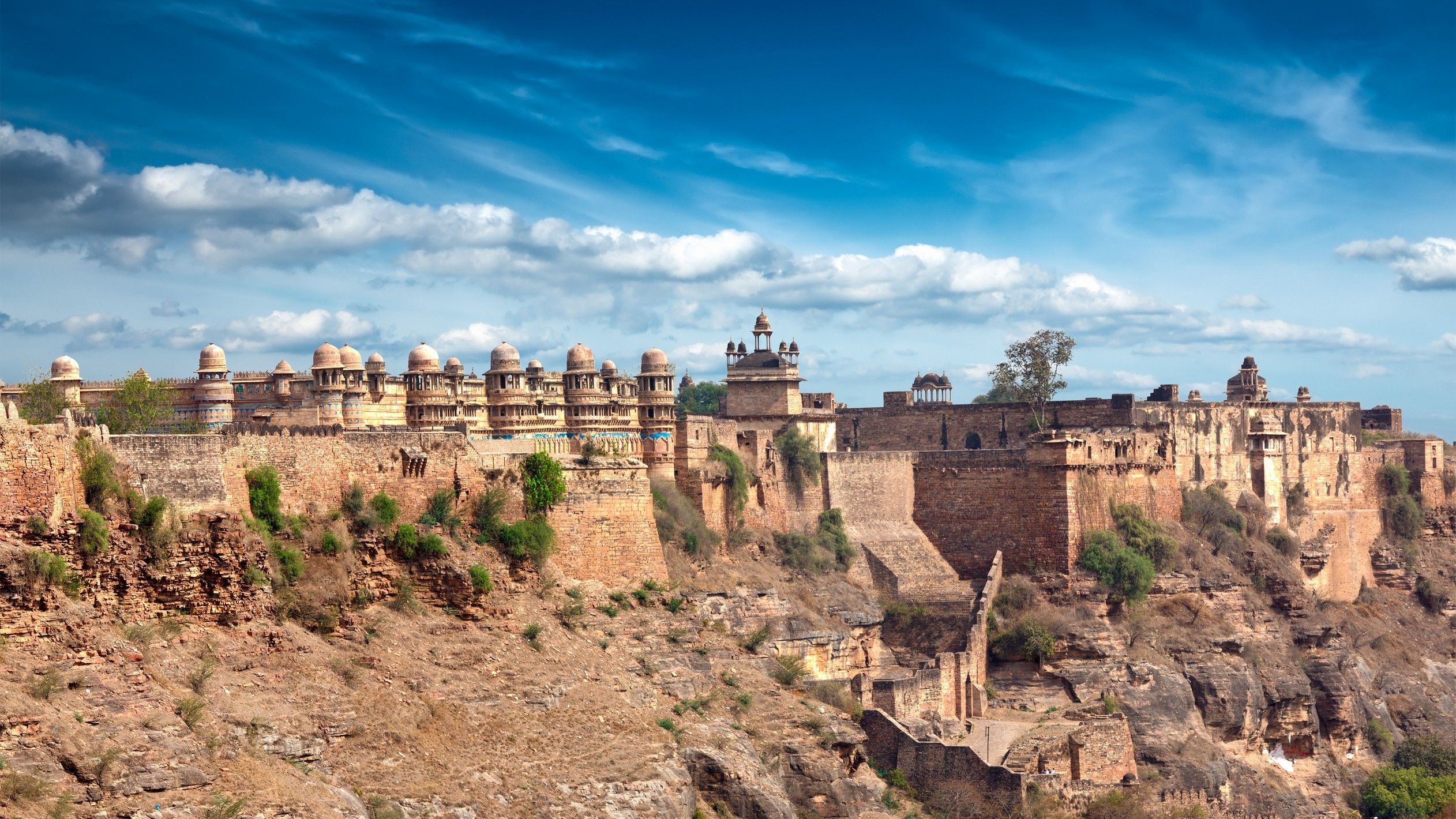
steiners-incredible-india-2024
vakantio.de/steiners-incredible-india-2024
BLOG 18: Back to Delhi & Europe
પ્રકાશિત: 17.03.2024
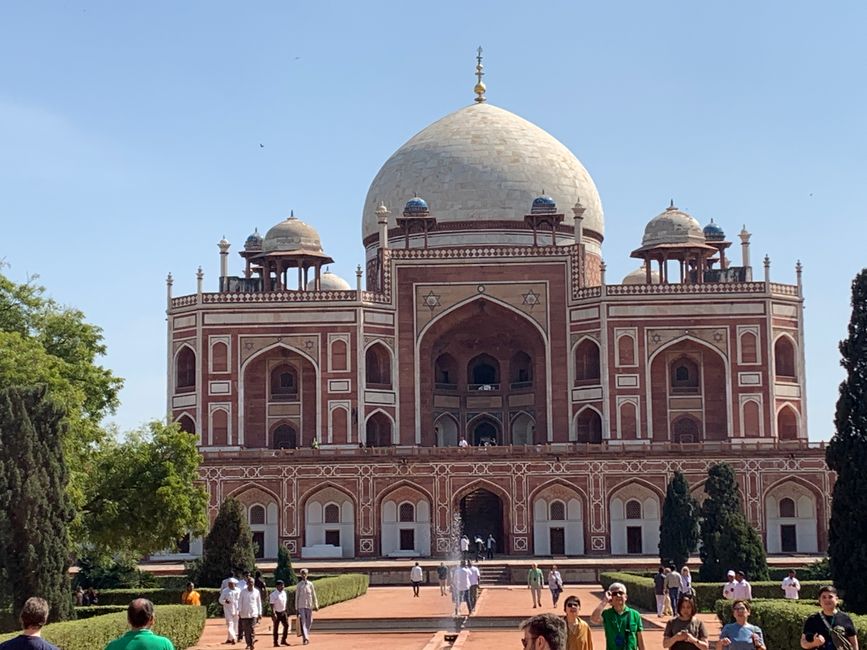
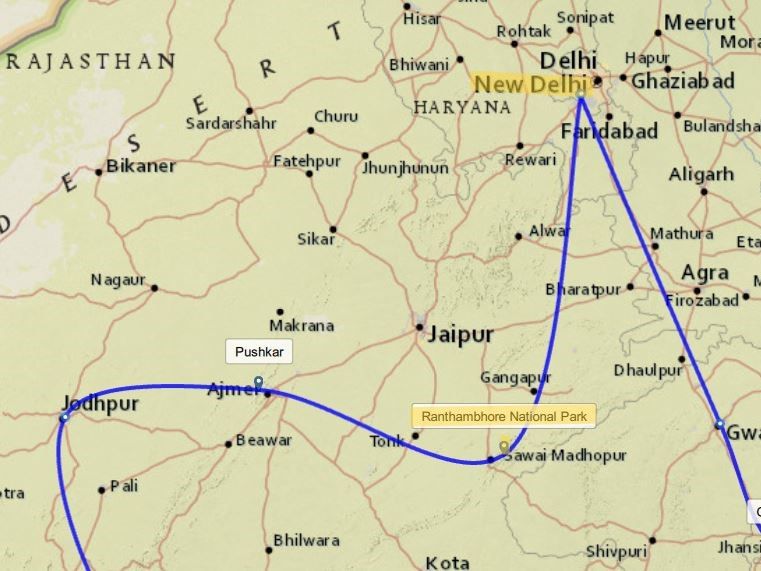
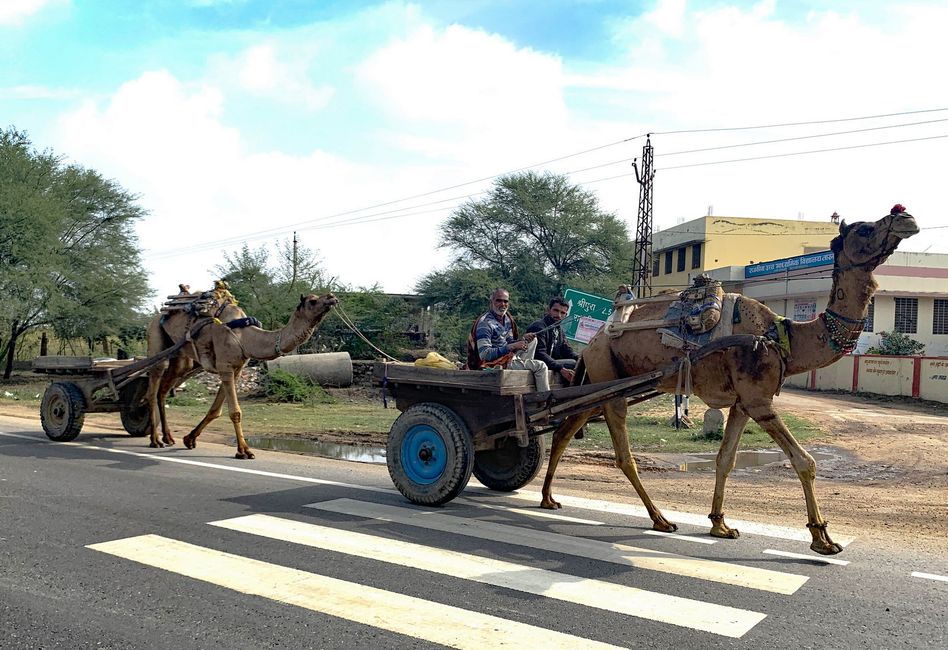


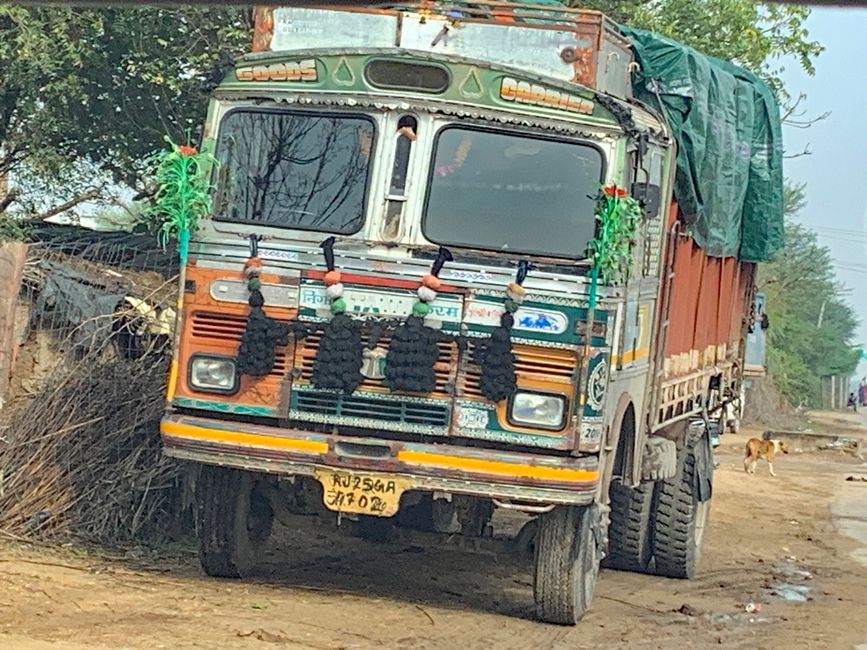
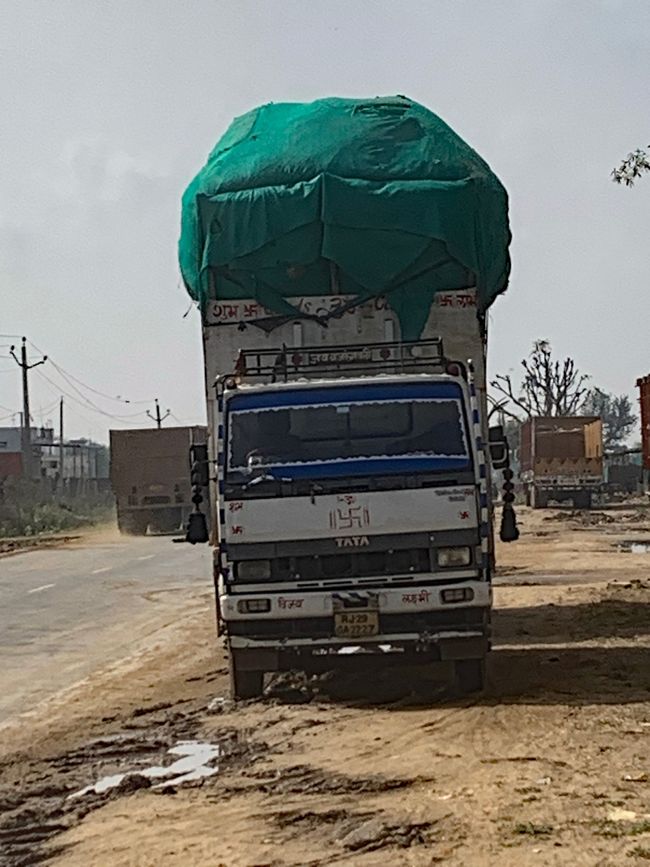
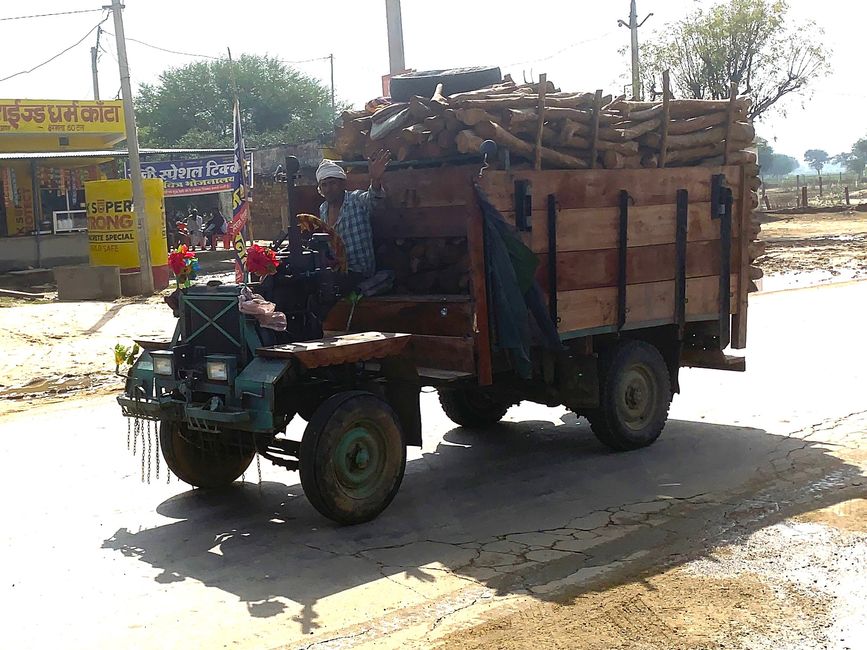

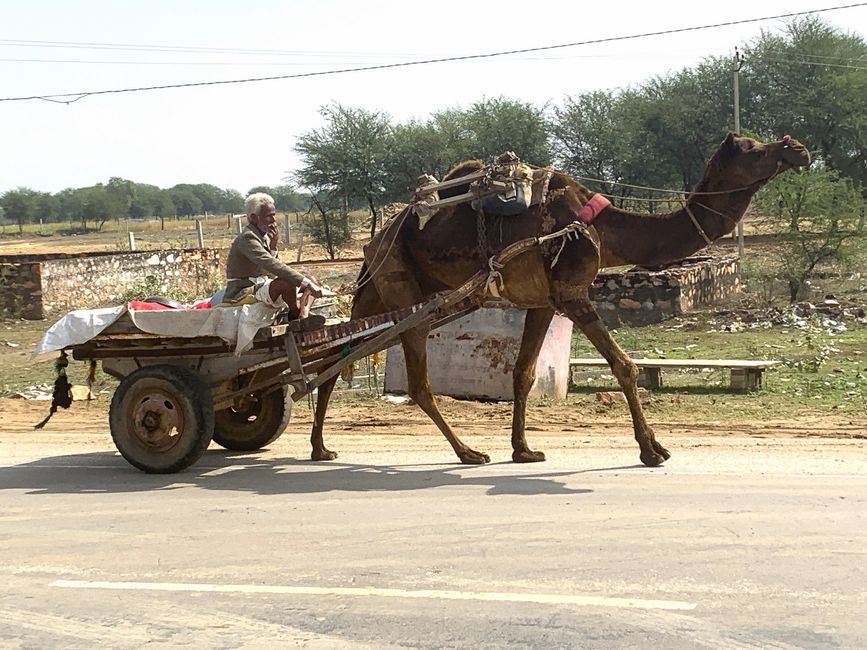
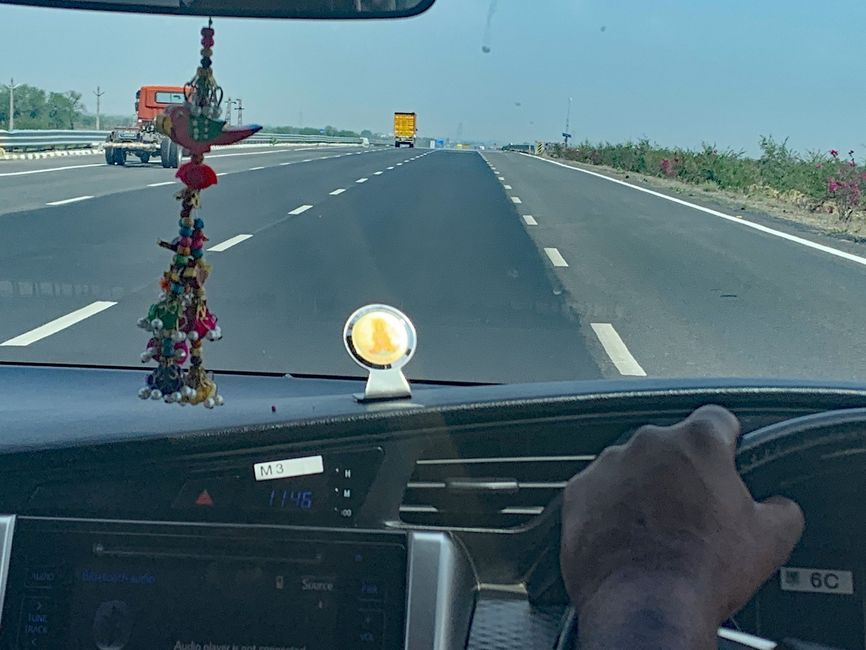
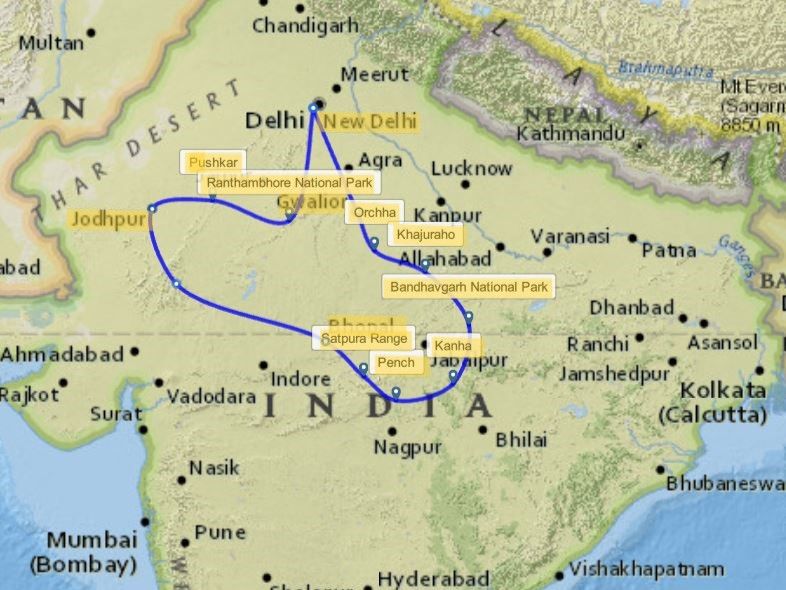
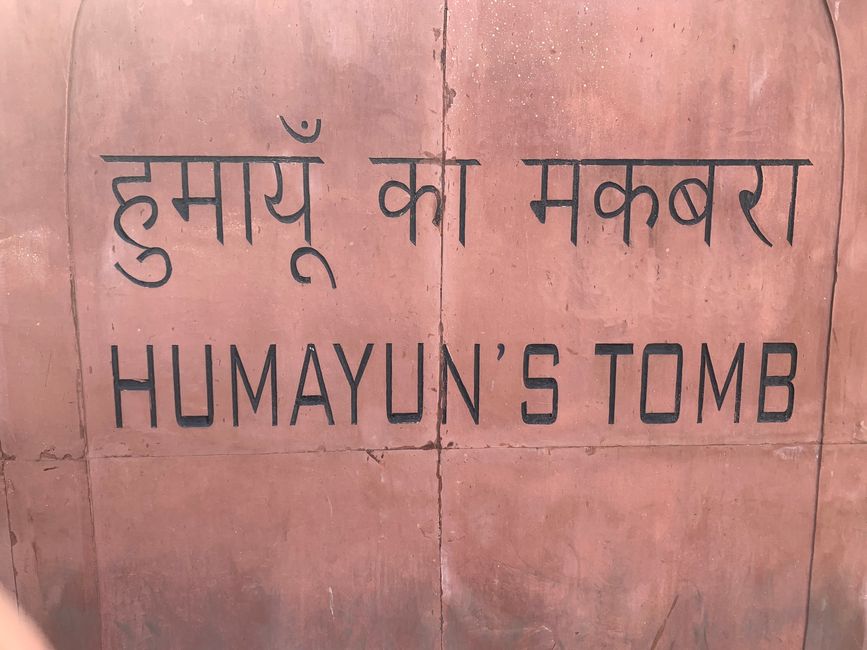
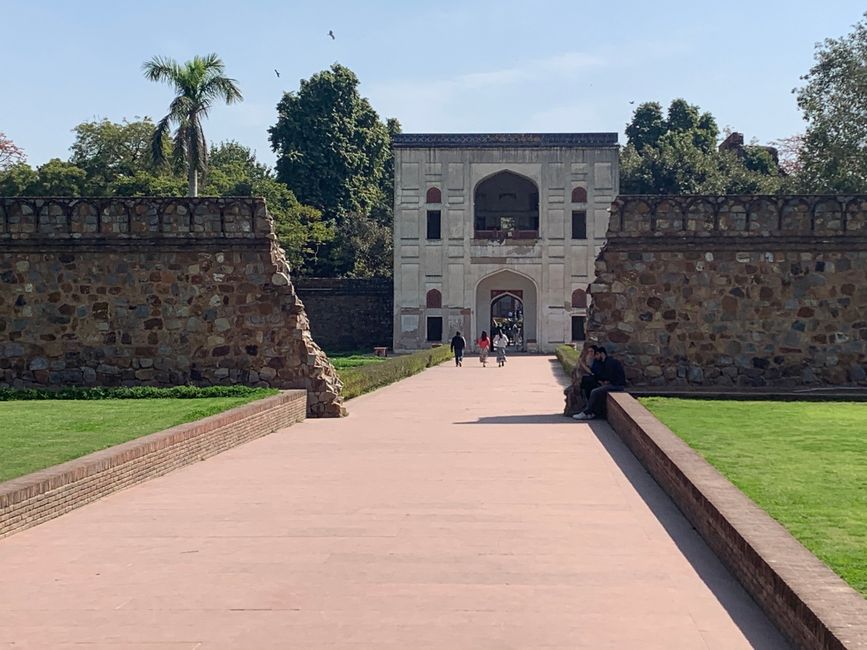
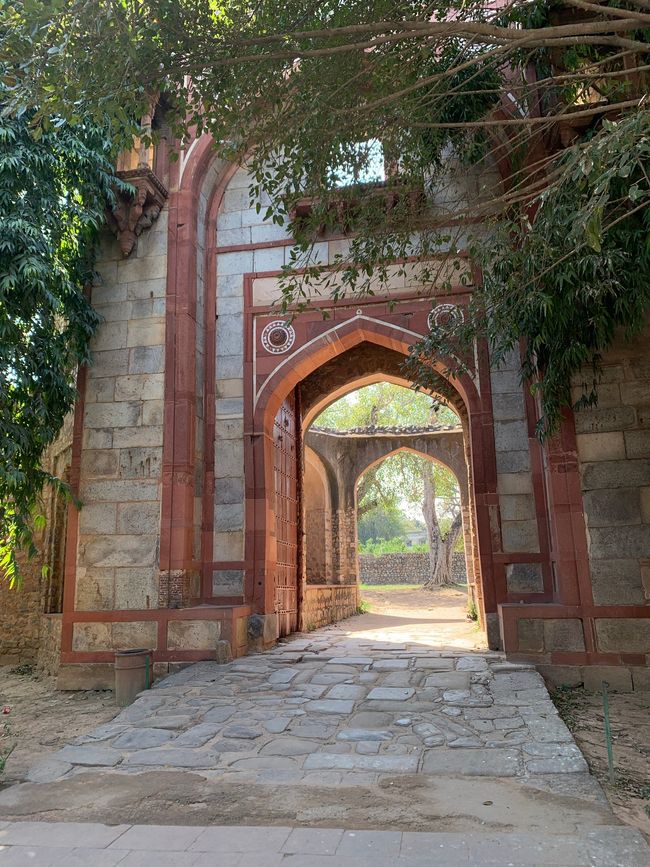

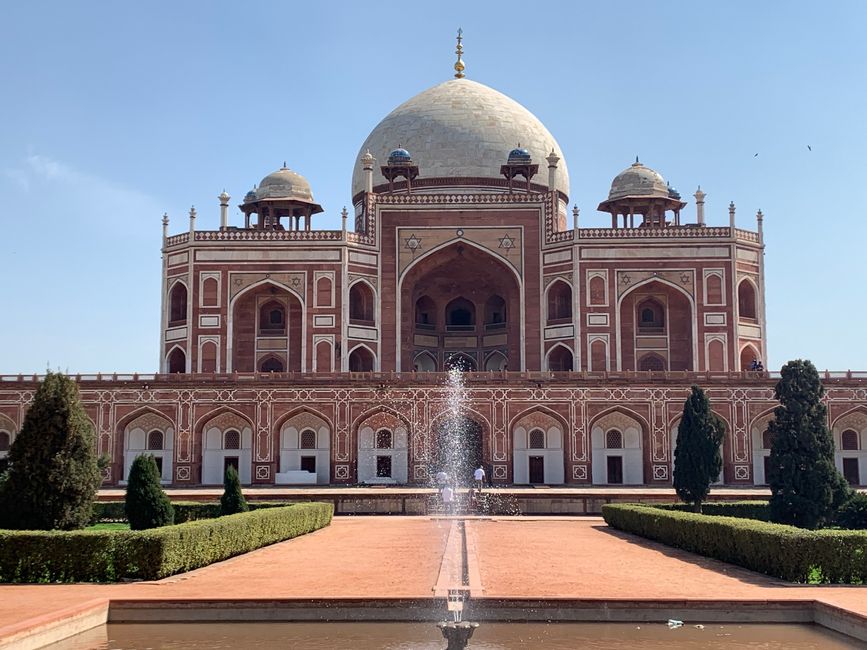
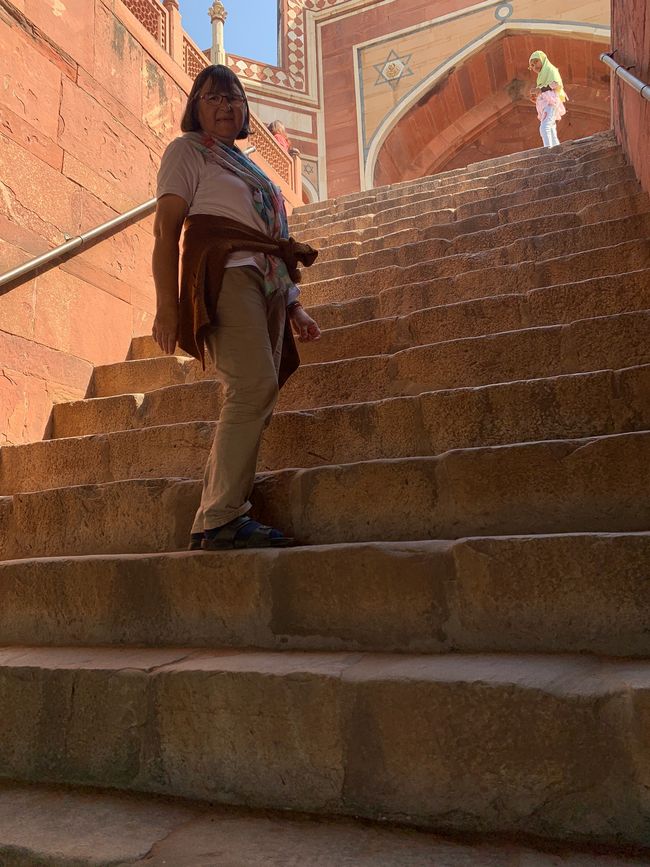
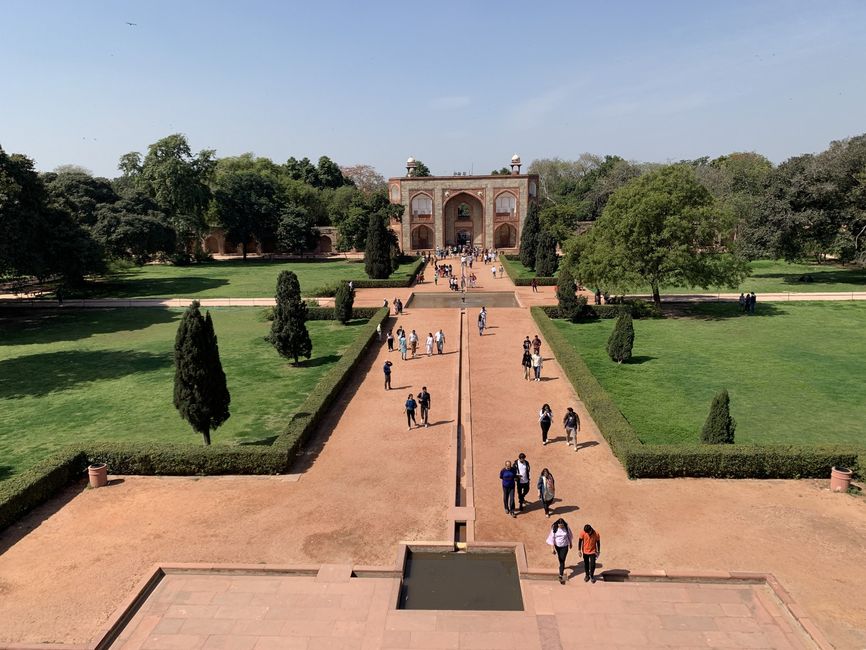
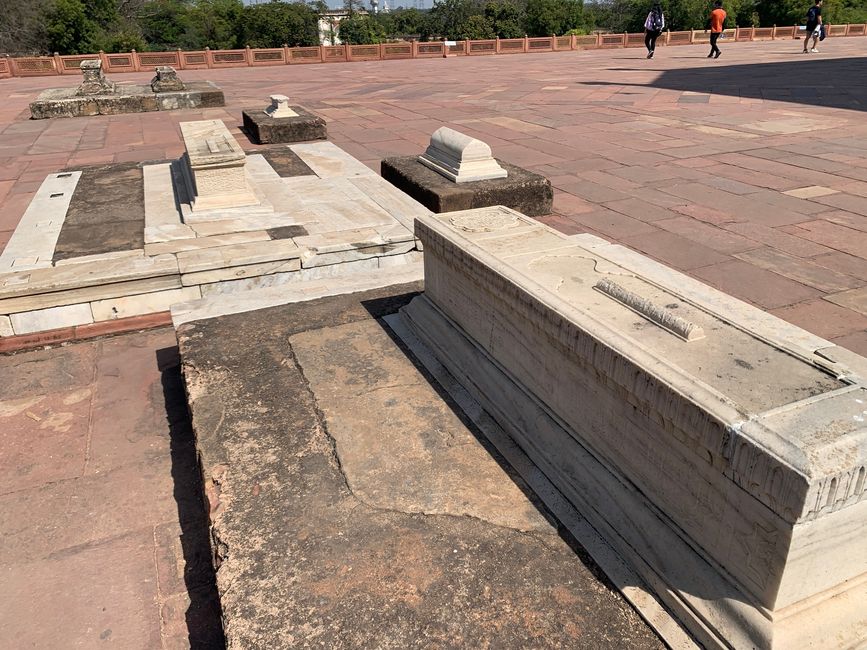
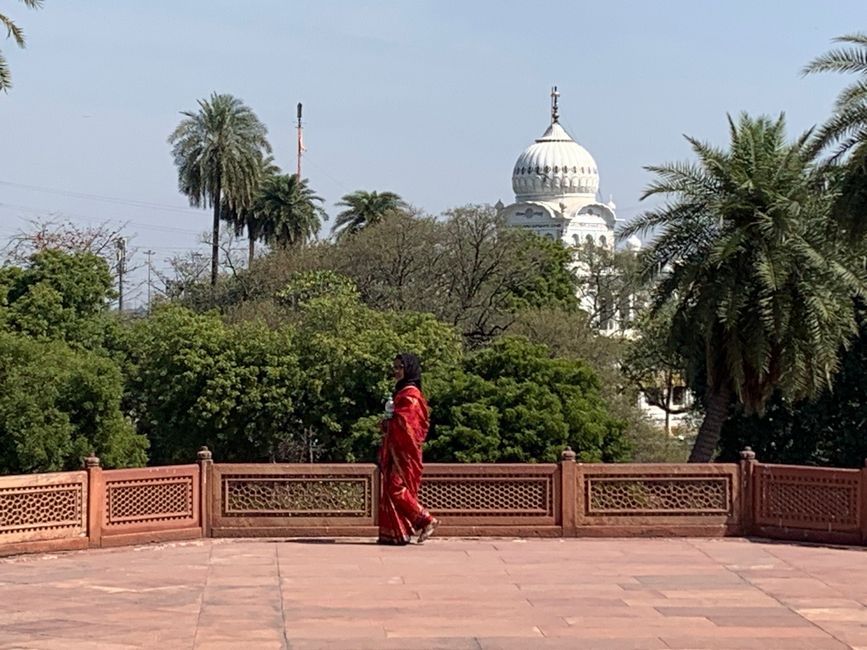
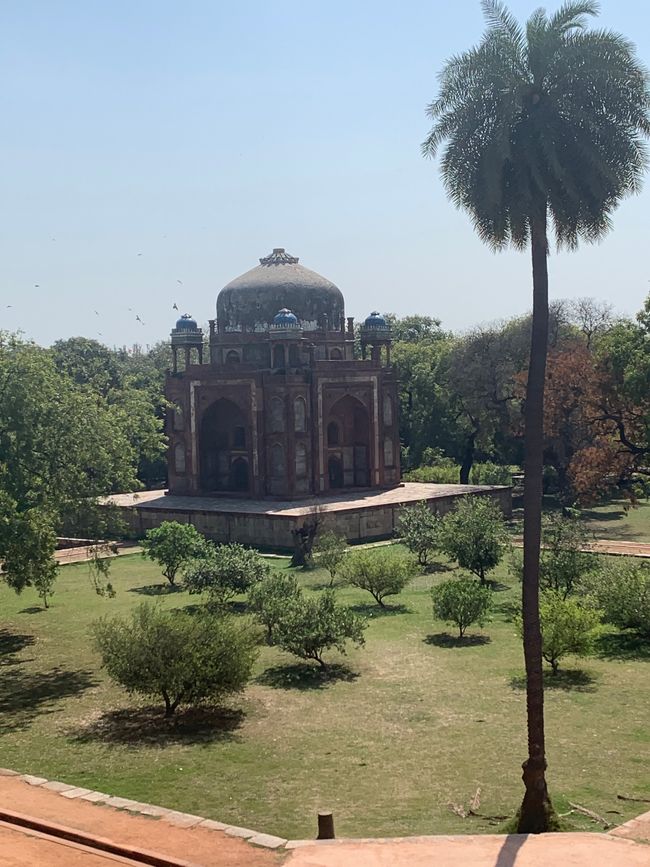
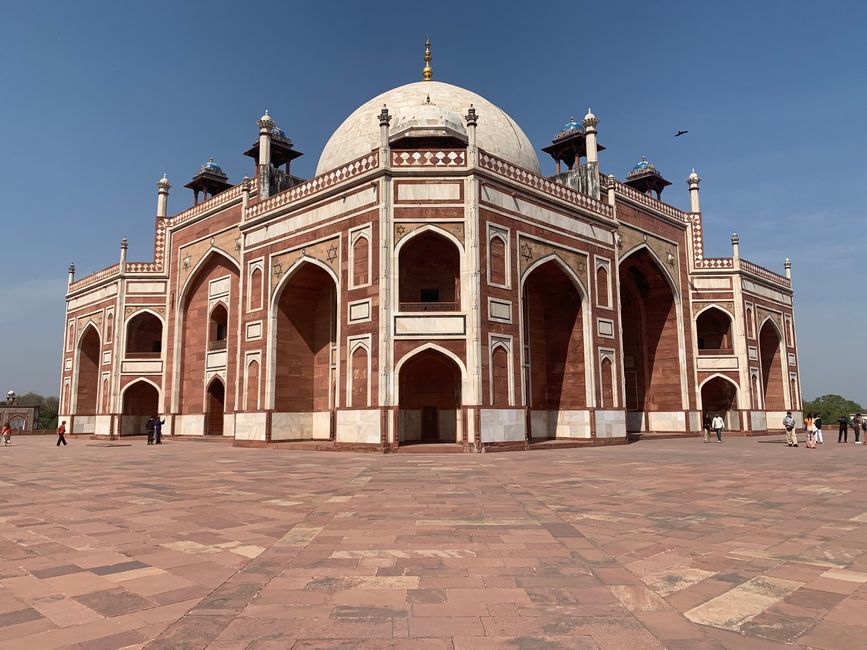

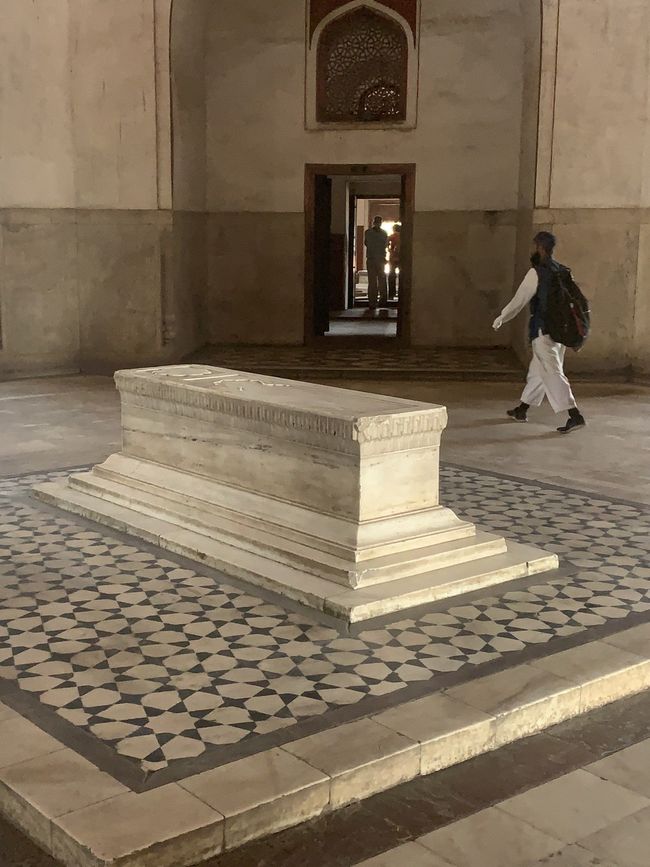
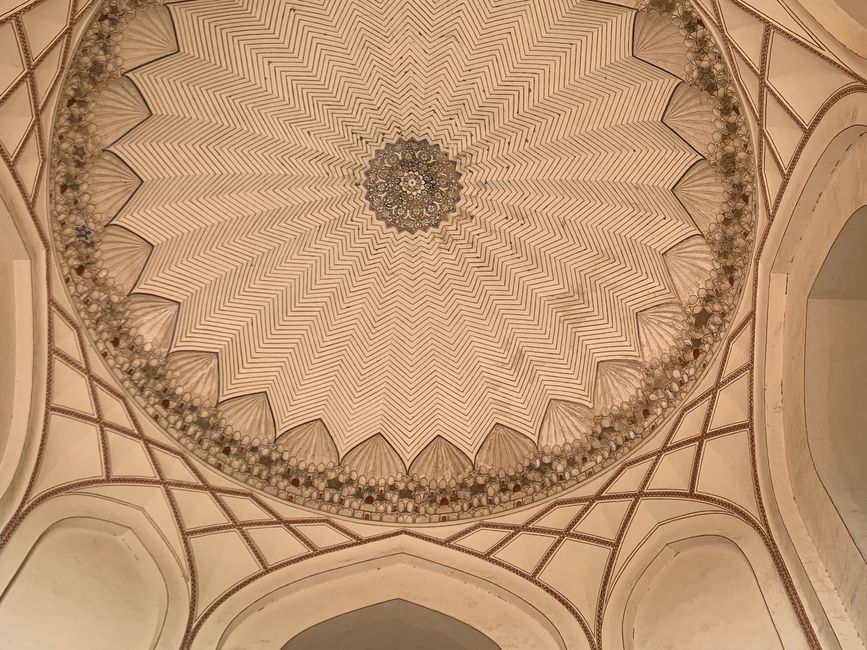
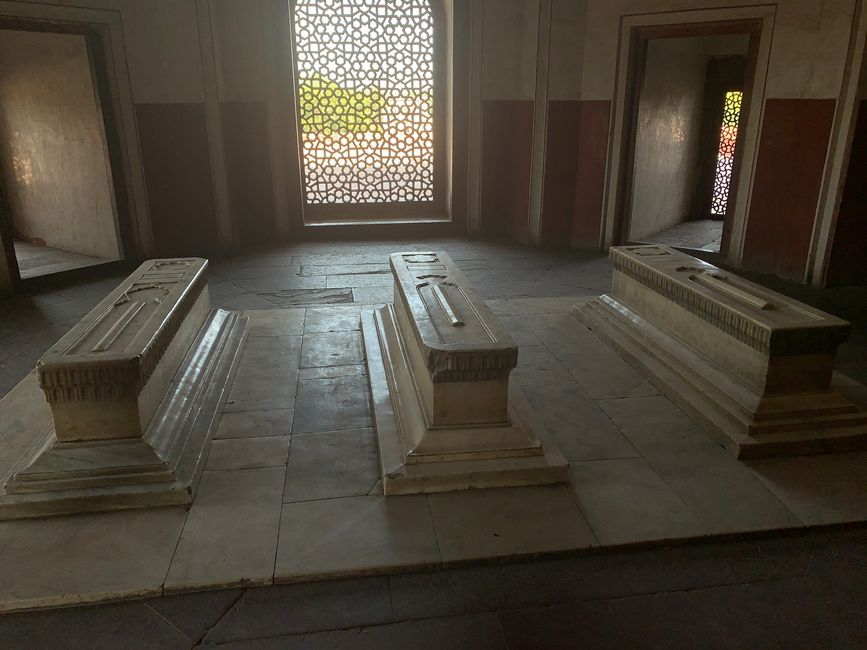
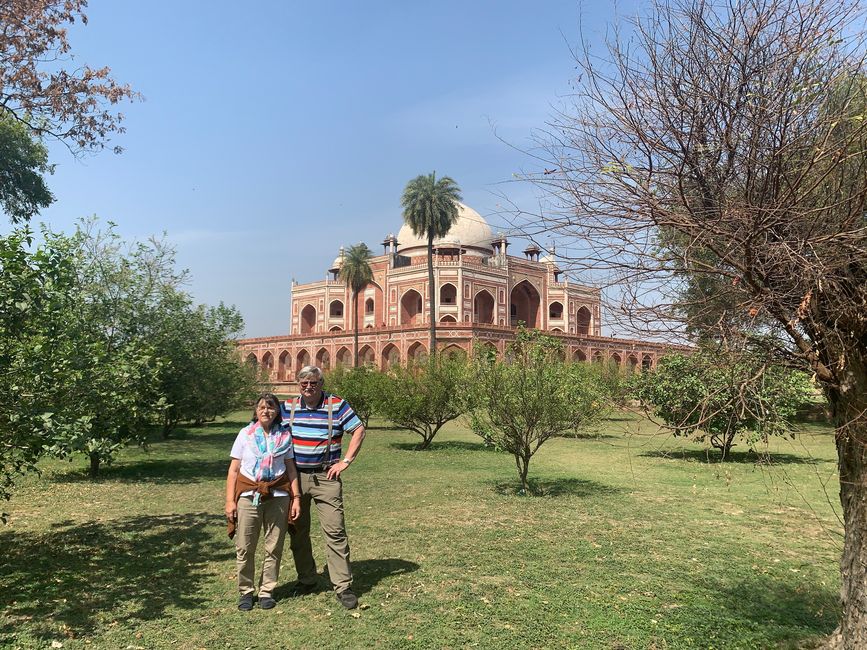
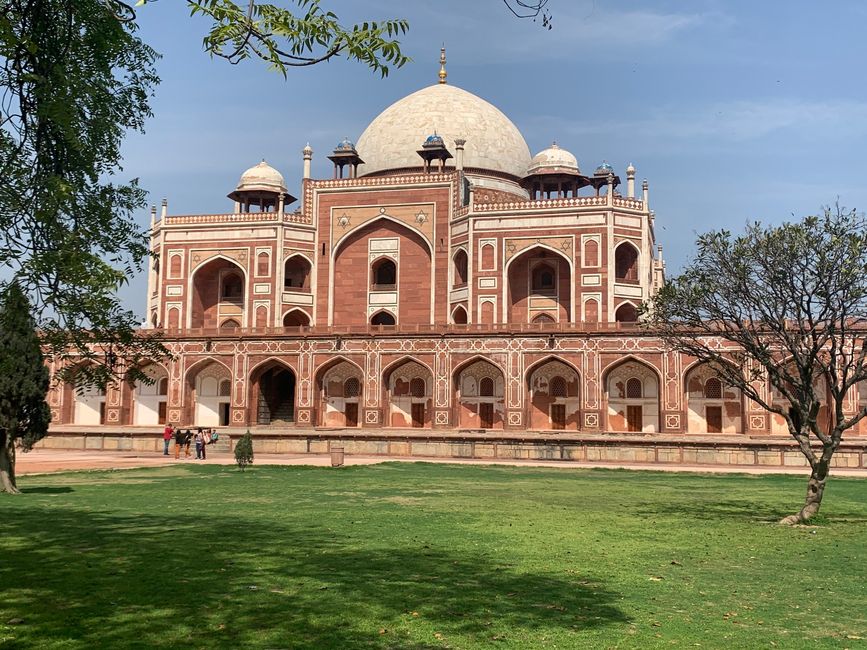
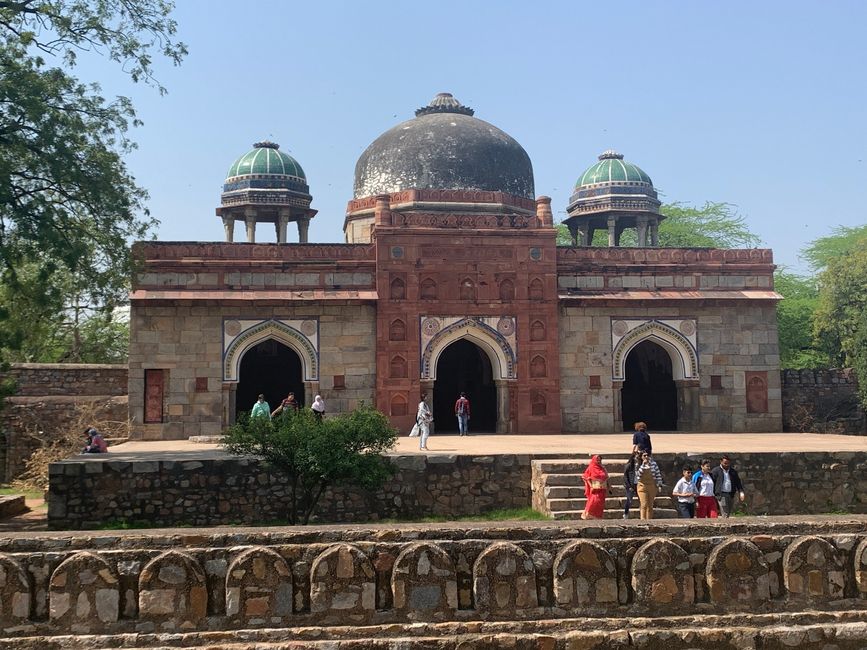

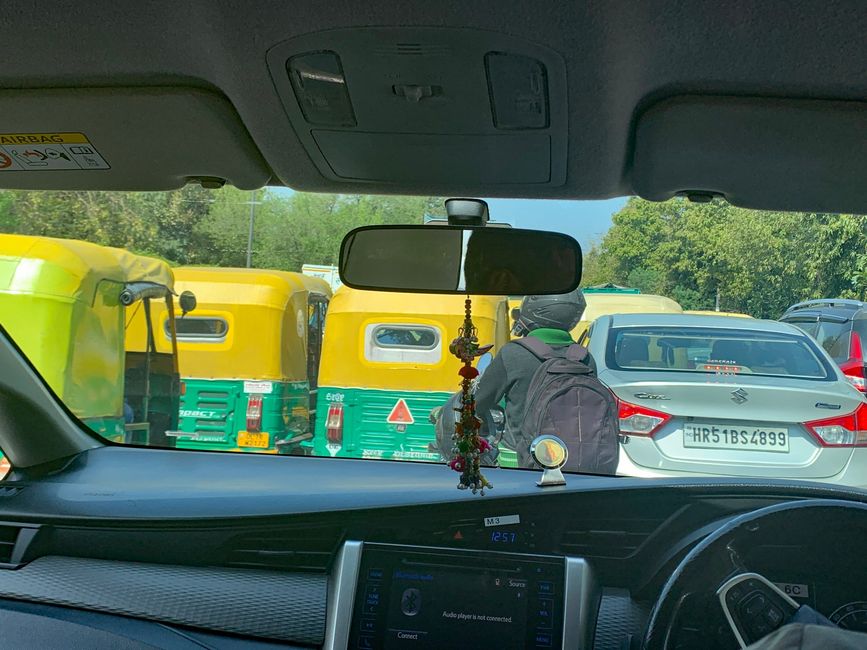
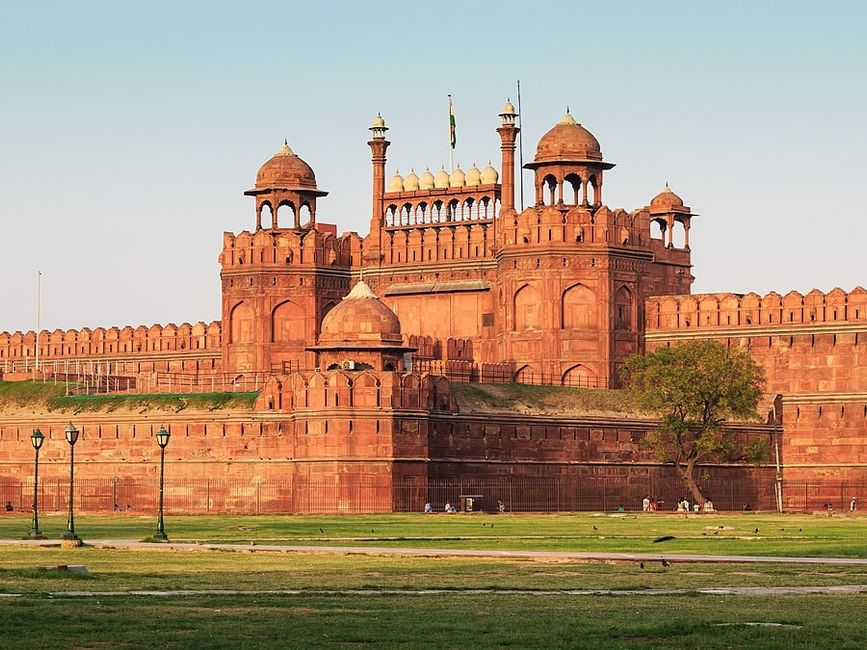


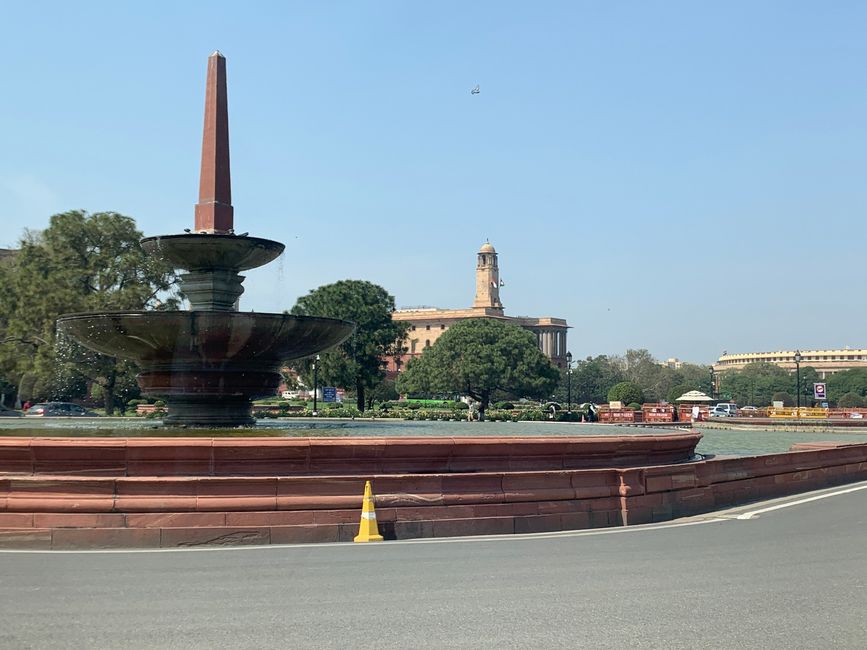
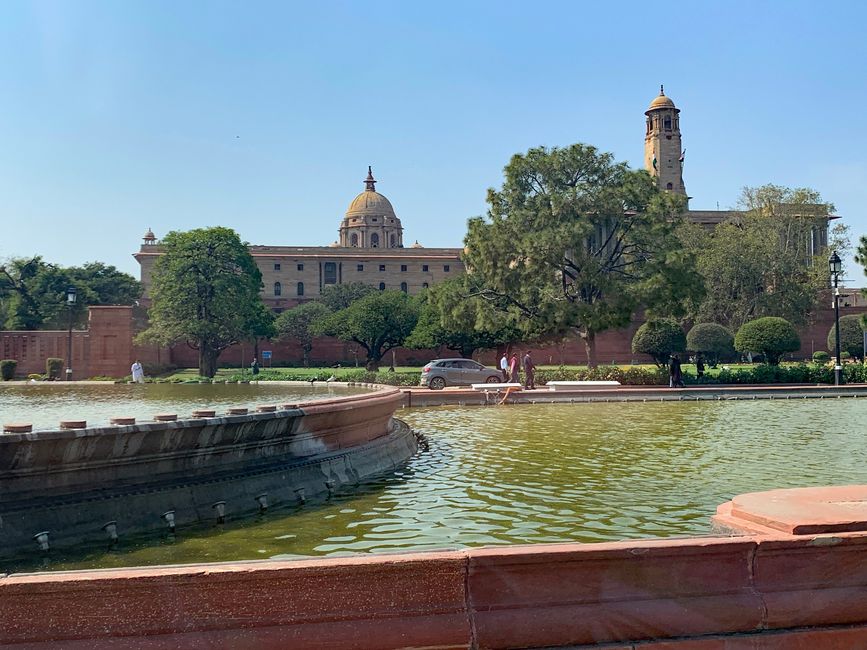
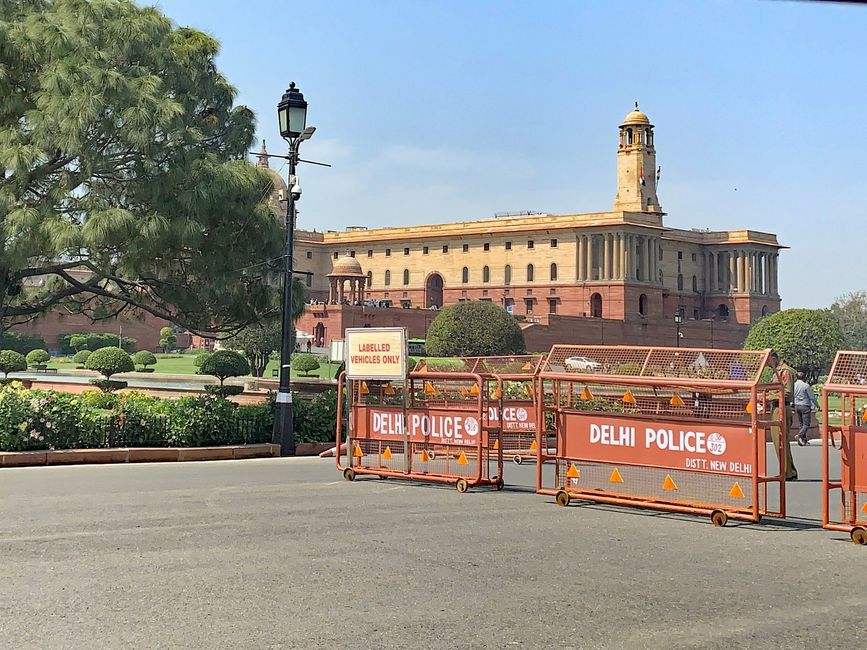
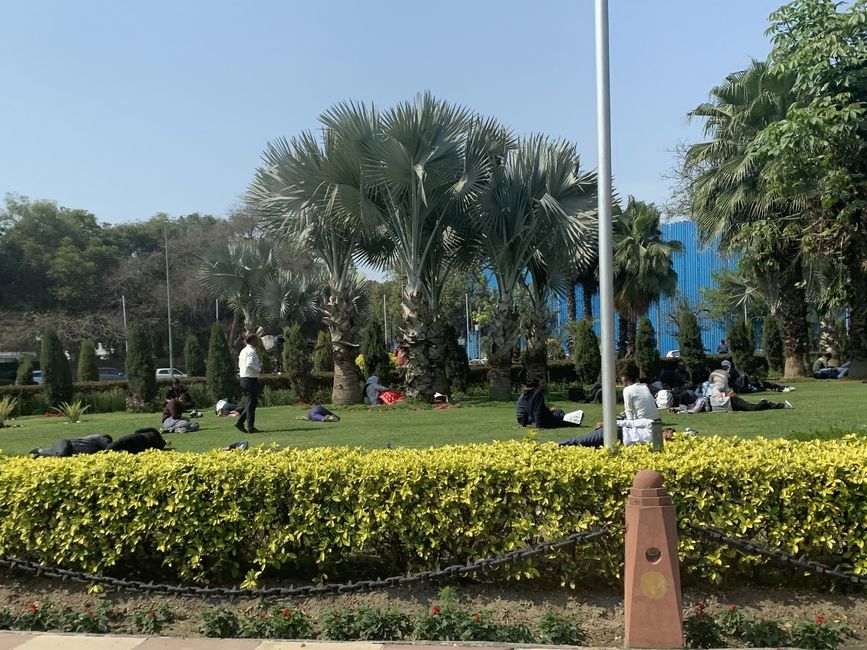

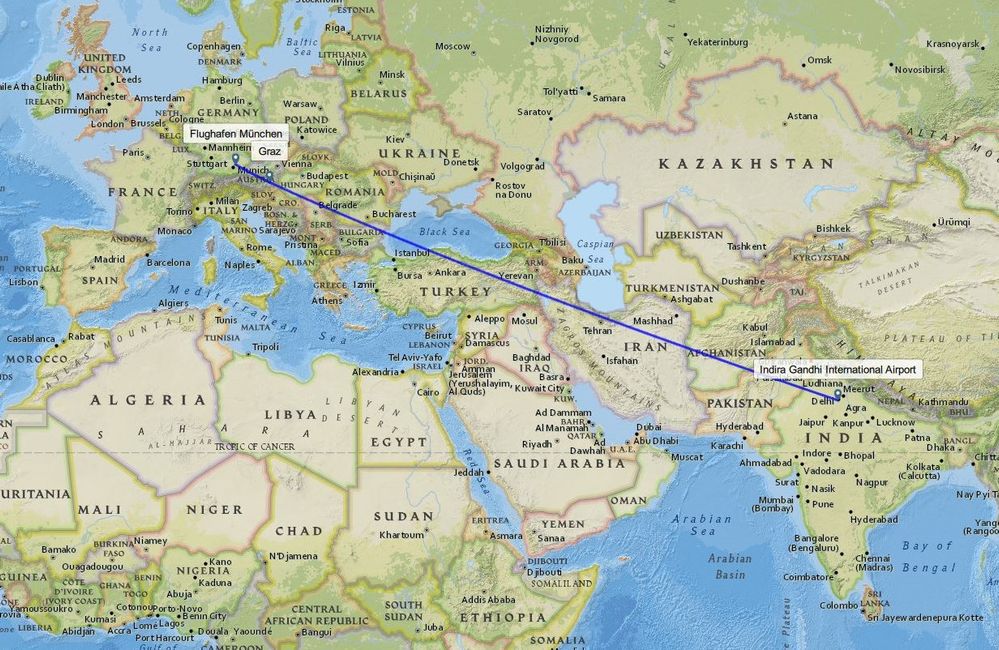
ન્યૂઝલેટર પર સબ્સ્ક્રાઇબ કરો
Today the last leg by car awaits us – back to Delhi. First we head on country roads with some interesting “sightings” towards the “New Delhi – Mumbai Expressway”, which was fully opened about a year ago. This completely new 8-lane highway with a length of 1350 km was completed in its entirety within 4 years. Probably wouldn't be possible in Europe.
With our arrival at our hotel in the Airport City in Gurugram (new district of Delhi), we have now completed our tour through central India.
On the last day we visit a few points in New and Old Delhi so that we don't have to sit around in the hotel until the evening.
First we visit the Humayun's Tomb - Humayun's Tomb is one of the most innovative and experimental monuments of its time and combines an Indo-Islamic architectural style. This magnificent garden tomb is the first significant example of Mughal architecture in India. It was built in 1565 AD, nine years after Humayun's death, by his elderly widow Bega Begam. The most notable features within the walled complex are the garden squares (charbagh) with paths and water channels, as well as the centrally located, well-proportioned, double-domed mausoleum and several smaller mausoleums and also a mosque.
Afterwards, Mukesh fights for us through the extreme traffic on the outskirts of Old Delhi (we have already visited the old town on a previous trip to India).
As we already knew, the Red Fort is closed on Monday, so we are content with the outside view. The Red Fort is the elegant red sandstone citadel of the fifth Mughal emperor Shah Jahan, built on the western bank of the Yamuna River. Shah Jahan started building this huge fort in 1638 when he decided to shift his capital from Agra to Delhi. The red sandstone walls of the massive Red Fort rise 33 meters above the clamor of Old Delhi, a reminder of the great power and splendor of the Mughals.
We continue to the former British government district in New Delhi. First a photo stop at the 42 meter high “India Gate”, an “Arc-de-Triumph”-like archway. Almost similar to its French counterpart, it commemorates 70,000 Indian soldiers who lost their lives fighting for the British Army in the First World War. The memorial bears the names of more than 13,516 British and Indian soldiers who died on the northwest frontier in the 1919 Afghan War. Under the arch, the Amar Jawan Jyoti commemorates the losses of the Indian forces in the 1971 Indo-Pakistan War.
We can only view the government buildings - all from the British colonial era - from a greater distance; access is practically impossible for “normal people”. We drive past several government buildings and official residences reminiscent of British colonial architecture. For example, the Parliament Building (designed by Sir Herbert Baker and 173 m in diameter), the Rashtrapati Bhawan (once the residence of the Viceroy), now an official residence of the President of India. Designed by British architect Sir Edwin Lutyens, it combines Western and Eastern architectural styles.
Back at the hotel it's time to collect our luggage and prepare for the 8½-hour flight to Munich and then on to Graz. To our great luck, we got a strike-free slot with Lufthansa and Munich Airport.
We are leaving India with a wealth of new impressions that we will only be able to fully process in the near future.
AND THIS IS THE LAST BLOG IN THE “steiners-incredible-india-2024” SERIES.
Thanks for your interest.
-------------------------------------------------- -----------------------------
Today the last leg by car awaits us – back to Delhi. First we head on country roads with some interesting “sightings” towards the “New Delhi – Mumbai Expressway”, which was fully opened about a year ago. This completely new 8-lane highway with a length of 1350 km was completed within 4 years. Probably wouldn't be possible in Europe.
With our arrival at our hotel in the Airport City in Gurugram (new district of Delhi), we have now completed our round tour through central India.
On the last day we visit a few points in New and Old Delhi so that we don't have to sit around in the hotel until the evening.
First we visit the Humayun's Tomb - Humayun's Tomb is one of the most innovative and experimental monuments of its time and combines an Indo-Islamic architectural style. This magnificent garden tomb is the first significant example of Mughal architecture in India. It was built in 1565 AD, nine years after Humayun's death, by his elderly widow Bega Begam. The most notable features within the walled complex are the garden squares (charbagh) with paths and water channels, as well as the centrally located, well-proportioned, double-domed mausoleum and several smaller mausoleums and also a mosque.
Afterwards, Mukesh fights for us through the extreme traffic on the outskirts of Old Delhi (we have already visited the old town on a previous trip to India).
As we already knew, the Red Fort is closed on Monday, so we are content with the outside view. The Red Fort is the elegant red sandstone citadel of the fifth Mughal emperor Shah Jahan, built on the western bank of the Yamuna River. Shah Jahan started building this huge fort in 1638 when he decided to shift his capital from Agra to Delhi. The red sandstone walls of the massive Red Fort rise 33 meters above the clamor of Old Delhi, a reminder of the great power and splendor of the Mughals.
We continue to the former British government district in New Delhi. First a photo stop at the 42-meter high “India Gate”, an “Arc-de-Triumph”-like archway. Almost similar to its French counterpart, it commemorates 70,000 Indian soldiers who lost their lives fighting for the British Army in the First World War. The memorial bears the names of more than 13,516 British and Indian soldiers who died on the northwest frontier in the 1919 Afghan War. Under the arch, the Amar Jawan Jyoti commemorates the losses of the Indian forces in the 1971 Indo-Pakistan War.
We can only view the government buildings - all from the British colonial era - from a greater distance; access is practically impossible for “normal people”. We're driving past several government buildings and official residences reminiscent of British colonial architecture. For example, the Parliament Building (designed by Sir Herbert Baker and 173 m in diameter), the Rashtrapati Bhawan (once the residence of the Viceroy), now an official residence of the President of India. Designed by British architect Sir Edwin Lutyens, it combines Western and Eastern architectural styles.
Back at the hotel it's time to collect our luggage and prepare for the 8½-hour flight to Munich and then on to Graz. To our great luck, we got a strike-free slot with Lufthansa and Munich Airport.
We are leaving India with a wealth of new impressions that we will only be able to fully process in the near future.
AND THIS IS THE LAST BLOG IN THE “steiners-incredible-india-2024” SERIES.
Thanks for your interest.
ન્યૂઝલેટર પર સબ્સ્ક્રાઇબ કરો
જવાબ આપો
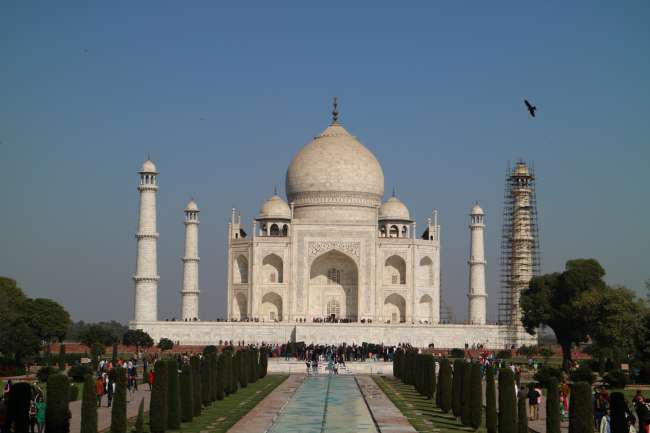
મુસાફરી અહેવાલો ભારત
